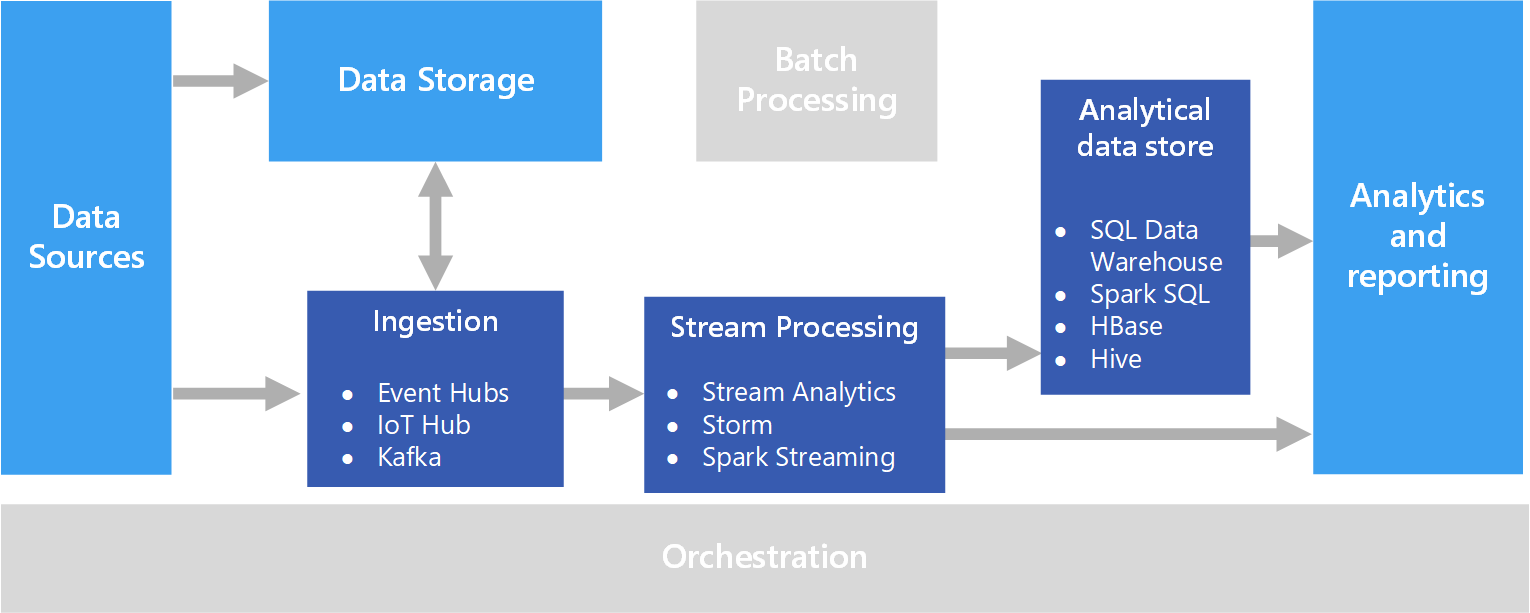Comparison of Real-Time and Batch Processing Techniques: Tools and Applications
Data processing is a critical element in the information age, where speed and accuracy are crucial for effective decision-making. Two widely used approaches are real-time processing and batch processing. Real-time processing involves analyzing and responding to data immediately, while batch processing refers to processing data in groups or sets. Each approach has its advantages and specific applications.

Real-time pipeline
Real-Time Processing
Real-time processing involves analyzing and responding to data as it arrives, with no noticeable delay. To achieve this, specialized tools are used, such as:
Apache Kafka
It is a distributed streaming platform that allows the streaming and processing of data in real-time. It uses a publish-subscribe model for data flow and is highly scalable and durable.
Apache Storm
A distributed real-time processing system designed for processing high-speed data streams. It uses topologies to define data processing and ensures low latency.
Spark Streaming
An extension of Apache Spark that enables real-time data processing using micro-batches (small data fragments). It offers high scalability and fault tolerance.
Applications
- Network and system monitoring.
- Real-time social network analysis.
- Detection of fraud in financial transactions.
A distributed and fault-tolerant processing system that can handle both real-time and batch processing. It offers low latency and high performance.
Batch Processing
Batch processing involves the collection and processing of data in groups or sets instead of continuously and in real-time. Common tools for this approach are:
Apache Hadoop
A framework that enables distributed processing of large datasets in computer clusters. It uses the HDFS distributed file system and the MapReduce programming model.
Apache Spark
An in-memory data analytics platform that allows processing large datasets in parallel. It offers significant speed improvements compared to MapReduce.
Apache Flink
Un sistema de procesamiento distribuido y tolerante a fallos que puede manejar tanto el procesamiento en tiempo real como por lotes. Ofrece baja latencia y alto rendimiento.
Applications
- Historical data analysis.
- Report generation and trend analysis.
- Processing large volumes of data for business intelligence.
Both real-time and batch processing approaches are crucial in today’s world of data analytics. The choice between them depends on the specific needs of the application and constraints of time, latency, and resources. Tools like Apache Kafka, Apache Storm, Apache Spark, and Apache Flink provide robust solutions to implement these approaches and address a wide range of applications in the modern era of data processing.

